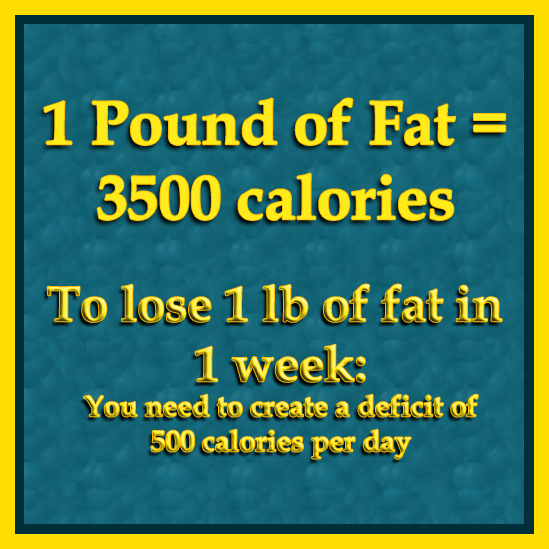Calories…they’re commonly known as the reason why we gain weight, right? This is true, but calories are not necessarily what leads to weight gain. For a little explanation, let’s learn exactly what a calorie is.
What is a Calorie?
A calorie is a unit of heat, invented in 1824 by Nicolas Clement. It’s the amount of energy needed to increase the temperature of 1 kilogram of water by 1°C.
The important takeaway from this definition: a calorie is energy.
Calories are what supply our bodies with energy throughout our entire lives. They’re what give us the energy we need to work out, to get out of bed, even to have our bodies function properly – including all of your major organs.
How do we get these calories? We receive these helpful calories from the food we eat. And because our bodies continually burn calories, we need to make sure we’re fueling ourselves with enough energy to keep us going. Even when we’re sleeping or our bodies are silently digesting the food we ate, we are burning calories.
And some activities require more calories to perform than others. For example, running burns more calories than walking. Why? Because it requires a lot more energy for the muscles in your body to make you run than it does to walk.
Basal Metabolic Rate vs Resting Metabolic Rate
Also known as BMR, our basal metabolic rate is the amount of calories our bodies burn in a 24-hour period to maintain basic human functioning such as breathing, cell repair, and blood circulation.
On the other hand, RMR, our resting metabolic rate, includes the calories needed to maintain basic human functioning and also factors in such things as the calories burned during digestion, as well as other small daily activities.
Don’t consume enough calories, and our organs don’t operate efficiently and we have no energy, eventually breaking our bodies down over time. This is why ongoing eating disorders such as bulimia and anorexia are so dangerous and often lead to heart disease.
So, what’s considered a normal RMR? The average adult RMR varies between 1000-1400 calories and depends on a variety of factors. RMR varies depending on your age, sex, weight, even the amount of lean muscle you have.
No matter what your current weight is, never go below 1200 calories a day…ever! You might be wondering why you wouldn’t be able to consume less than 1200 calories if your RMR is only 1000. That’s because the above numbers don’t include any activity for the day, so unless you lie in bed all day not chewing, swallowing, or even just blinking, you’ll need to intake more calories in order to be able to do any type of physical activity.
How Calorie Intake Leads to Weight Gain
Weight gain in actually very scientifically simple. You gain weight because you’re consuming more calories than you’re burning.
To gain just one pound of fat in one week, all you will need to do is consume 3500 calories more than you burn that week. That is only 500 calories extra per day – very easy to do if you’re not watching your daily caloric intake!
Here’s an example I’ve included to put everything into perspective for you and help you really understand why the quickest, most effective weight loss will always be from a combination of a healthy, reduced-calorie well-rounded diet and an effective workout program. We’ll use Jane as an example.
Jane’s RMR is 1200 calories. Her body naturally burns another 400 calories a day through her regular daily activities to equal a total of 1600 calories burned in a day.
Here are some scenarios of Jane’s fluctuating weight:
Jane falls in love with high calorie frappuccinos from her local coffee shop. Each frap contains 510 calories. Jane enjoys them so much, she starts having one every day for the year without making any other adjustments to her diet.
In one week, Jane gains one pound of fat! In just four weeks, she puts on four pounds…and in one year’s time, she adds 52 pounds to her frame – ouch!!!
While you would have to really love your morning frappuccino, I like to use this one as an example, because of how easy it is to gain that kind of weight in just one year’s time. But sadly, that’s really all it takes – one simple bad decision made consecutively over time without making an adjustment to your daily caloric intake elsewhere.
Calories and Weight Loss
Now that we’ve discussed how easy it is to gain weight, let’s go over how to lose weight, since that really seems to be the real topic of interest. You can probably already begin to see how they affect weight loss.
To lose one pound of fat, you must consume 3500 less calories or burn 3500 more calories each week, which is equivalent to 500 calories less per day. It’s thanks to our RMR that we cannot just stop eating to lose weight – weight loss must be a gradual process to be effective.
Here is a simple explanation for losing weight:
We’ll use Jane again. Jane, who is maintaining her weight at 1600 calories per day, decides she wants to lose 10 pounds to really show off her belly in a bikini for the summer.
Jane could eat 250 less calories a day to lose 2 pounds in a month. In just 5 months, she would hit her weight loss goal and have lost 10 pounds.
Alternatively, Jane could begin exercising for 30 minutes a day at an intensity where she is burning 250 calories per workout. Jane would need to exercise every day for 5 months to lose lose the ten pounds of weight.
OR…Jane could double her rate of success by cutting 250 calories from her daily diet and burning an extra 250 calories through exercise. Doing both would allow Jane to hit her goal weight in just 2.5 months! This is why diet and exercise together are always the recipe for weight loss success.
How to Calculate How Many Calories You Need to Gain or Lose Weight
First, you need to calculate your RMR. There are many different formulas to do so, but one formula considered to be one of the most accurate is the Mifflin-St Jeor Equation.
Mifflin-St Jeor Equation (calories/day):
Male: 10 x weight + 6.25 x height – 5 x age + 5
Female: 10 x weight + 6.25 x height – 5 x age – 161
*weight in kilograms, height in centimeters, age in years
Or make it easier on yourself, and use an online calorie calculator.
Add in 400-600 calories for daily activities, and you have the baseline calories you need to maintain your current body weight.
After determining your RMR and how many calories you burn through your regular daily activities, you can subtract 500 calories to help you lose weight or add 500 calories if you’re looking to gain weight.
Weight Loss Example for Women
A 30-year-old female who is 5’6″(168cm) and weighs 180 lbs (81.65kg)
= (10 x 81.65 (weight in kg)) + (6.25 x 168 (height in cm)) – (5 x 30 (age in years)) – 161 = 1556 calories
1556 calories from the RMR calculation plus 450 calories burned through her regular physical activity equals 2006 calories burned each day.
To lose weight by diet alone, she would need to eat 1506 calories each day.
Weight Gain Example for Women
A 30-year-old female who is 5’6 “(168cm) and weighs 180 lbs (81.65kg).
= (10 x 81.65) + (6.25 x 168) – (5 x 30) – 161 = calories
Including her regular 450 calories burned each day, she would need to consume 2006 plus 500 calories means she would need to consume 2506 calories daily to gain one pound per week.
Weight Loss Example for Men
A 30-year-old male who is 5’10″(178cm) and weighs 180 lbs(81.65kg).
(RMR) = (10 x 81.65) + (6.25 x 177) – (5 x 30) + 5 = 1778 calories
1778 plus the 600 calories he’s burning naturally each day, then minus 500 calories means he needs to consume 1878 calories daily to lose one pound a week.
Weight Gain Example for Men
A 30-year-old male who is 5’10” (178cm) and weighs 180 lbs ( :
= (10 x 81.65) + (6.25 x 178) – (5 x 30) + 5 = 2771 calories
1778 plus the 600 calories he’s burning naturally each day, then adding 500 calories means he needs to consume 2878 calories daily to gain one pound per week.
One thing to particularly note about these calculations is that they are NOT the end all be all. Some people’s metabolic rates are naturally faster or slower than others’, so you need to find out what works for you. A week’s time is usually enough to see if you’re headed in the right direction.
One thing to note is that as you lose 10lbs, you should re-evaluate your current caloric needs as you will not be needing as many calories to sustain your lower body weight. And remember, never go below 1200 calories in a day!
Why I Wrote This Post
I did not write this post so you could just calculate how many calories you need. I wrote it as a way to show you that there is a reason why you are gaining weight, losing weight, or maintaining weight. You don’t know how often I people tell me they are worried or discouraged because they are not losing weight even though they’ve been exercising religiously – only to learn they’re not watching their diets or keeping track of their daily calories at all.
Weight loss, weight gain and weight maintenance are ongoing process. As we age, our metabolisms change. I hope this post showed you that calories really aren’t evil, they give us the energy our bodies need to survive and keep us functioning optimally. It’s when we abuse calories that the problems arise.



Please can somebody help me how to calculate my daily calories intake, I’m 62 years old and weight 175, I want to lose around 25 pounds, thanks.
Hi Carmen, I would suggest between 1,200 and 1,400 a day. Bethany
Hi Bethany,
I am not sure if this is the right way to ask a question on your blog. I was trying to order the challenge package online using the link on your website but there was no payment plan. Any idea how I could go about setting a payment plan?
HI Mary, Sorry, there are no payment plan options for Challenge Packs. -Bethany.